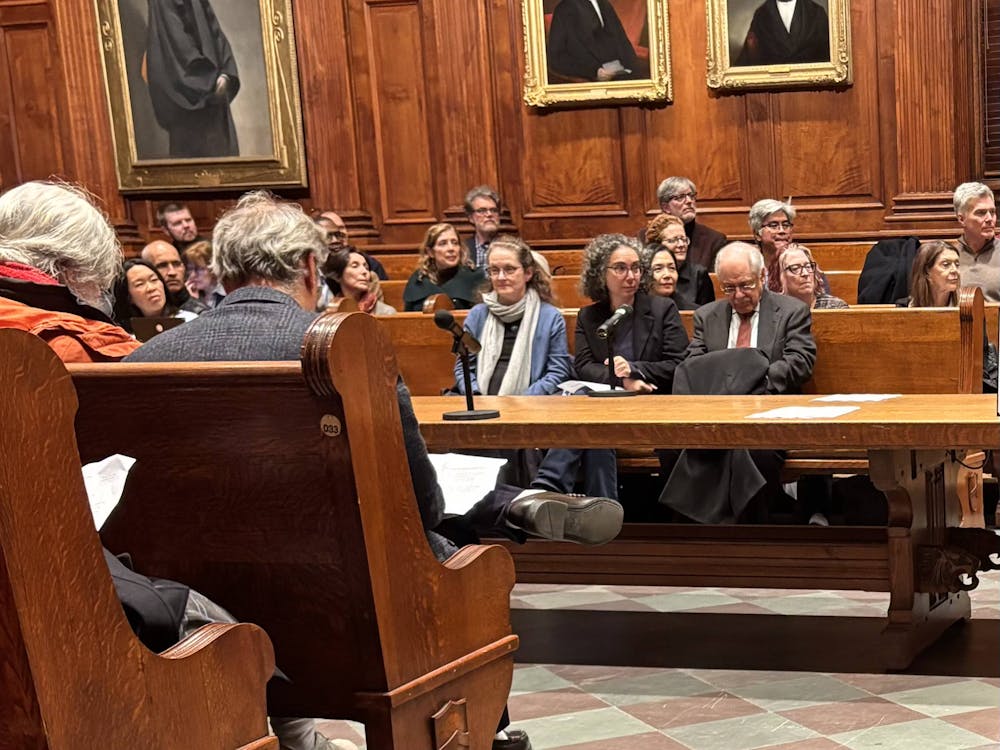Nine technologies developed by the University received research grants from the Princeton Intellectual Property Accelerator Fund in 2013. The fund aims to provide for the University’s development of new technologies that can be adapted for the global marketplace by private companies.
The winners of this year’s grants are professors Michael McAlpine, Mung Chiang, Paul Chirik, Tom Muir, Paul Prucnal, Robert Prud’homme, Thomas Shenk, Paul Steinhardt, Salvatore Torquato and Mark Zondlo. Their projects include tattoos that can detect harmful bacteria in humans, more efficient computer circuits operating with light and a portable nitrous oxide sensor for studying greenhouse gas emissions.
Dean for Research A.J. Smith GS ’66 said that the University hopes these funds will help facilitate the initial development of new technologies so that they can become ready for investment or final development by private companies sooner. “The major idea of the fund is that if someone has an idea or research that is at a particular phase, to bring it to a higher phase. This pulse of funding can help do that,” he explained.
Director of the Office of Technology Licensing John Ritter explained that at present, it often takes more than 10 years for a University technology to be developed into a commercial product. University grants typically fund the initial stages of technology development, but a commercial entity often invests additional money and oversees the final stages of development before a technology is brought to market. “You need a commercial entity that will put the additional research and the resources needed to develop the technology into a commercial product,” he said.
The Fund was established in 2011 and modeled on a program sponsored by the New Jersey Commission on Science and Technology, which was discontinued by the state due to financial concerns, Ritter said. This year is the second year the Fund has awarded grants.
According to Ritter, in the normal process of developing technologies, the University may either seek out companies or be approached by interested associations seeking partnership opportunities. Sometimes, a researcher may already have a personal connection with a private company or motivated students may start their own company based on their projects.
As a result of potential licensing agreements with private corporations, Princeton may receive fees that are distributed to the University, professors and researchers in accordance with the University’s income patent policy, according to Smith. However, he noted that the vast majority of licensing agreements do not generate fees. “Fees are not our primary motivation,” he said.
“Society benefits from tech-transfer,” explained Ritter, referring to the exchange of technology between universities and private companies.
Smith cited the example of critical components of the Samsung Galaxy phone display, which were developed by the University’s department of electrical engineering. He added that many faculty and students are very interested in applying research to commercial applications.
University-developed technologies have had financial success in the past, including Alimta, an anti-cancer drug whose active ingredient was discovered in 1989 by chemistry professor emeritus Edward Taylor. Proceeds from the development of Alimta greatly contributed to financing the $278 million Frick Chemistry Laboratory. Sales of Alimta, marketed by pharmaceutical company Eli Lilly, are expected to climb to $3.5 billion by 2016. In 2009, the company paid the University royalties that amounted to a single-digit percentage of net sales. No more recent data about the royalties’ size as a percentage of net sales is available.
While noting the rarity of such an occurrence, Smith said the University had “hit the jackpot” with Alimta, which has brought in $100 million or more in royalties per year for the past few years, shared between the University and the inventor.








